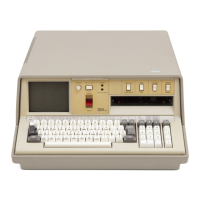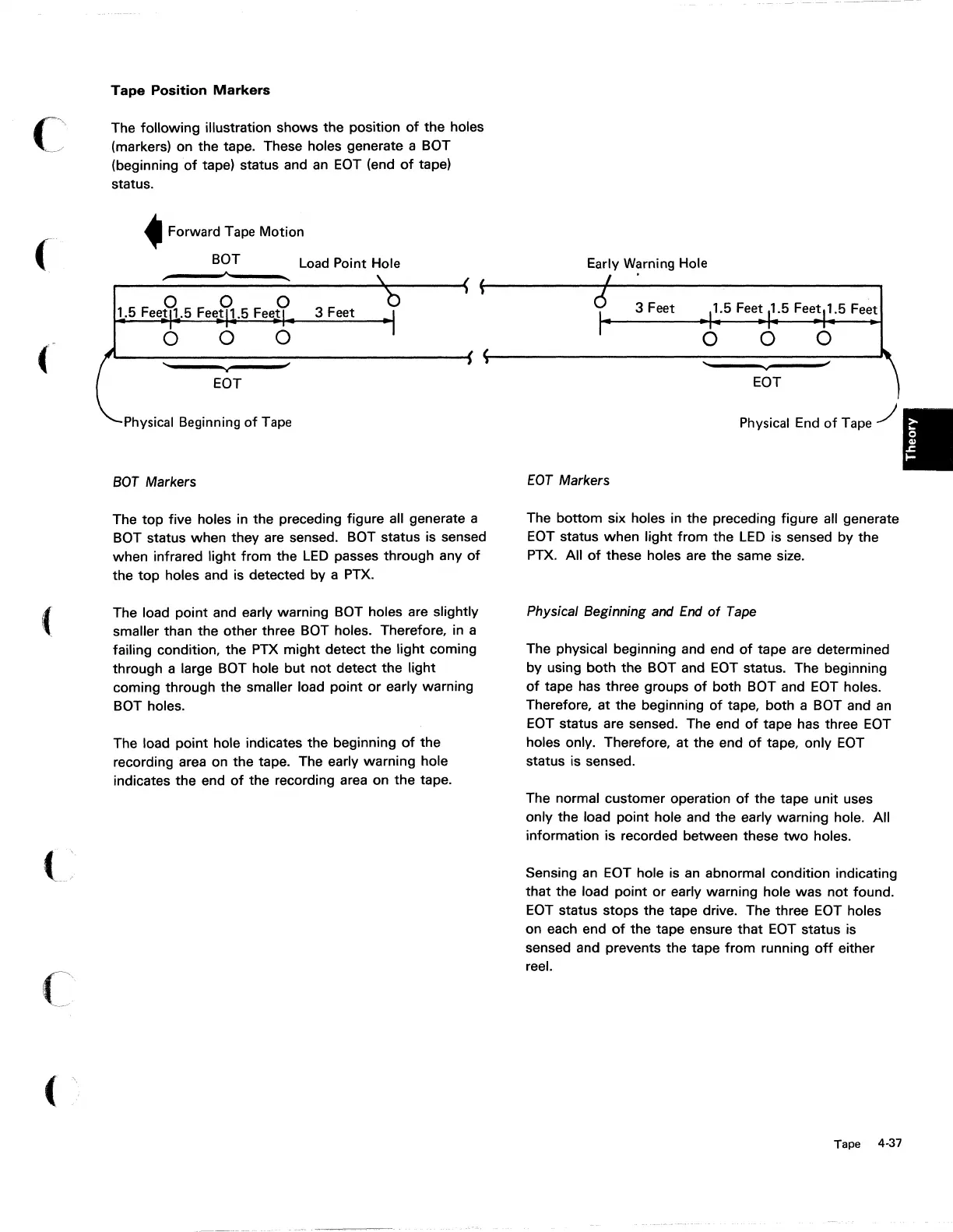c
(
(
(
c
( "
Tape
Position
Markers
The following illustration shows the position
of
the holes
(markers) on the tape. These holes generate a BOT
(beginning
of
tape) status and
an
EOT
(end
of
tape)
status.
~
Forward Tape Motion
BOT
Load
Point Hole
3 Feet
o
EOT
Physical Beginning
of
Tape
BOT Markers
The
top
five holes in the preceding figure all generate a
BOT status when they are sensed. BOT status is sensed
when infrared light from the
LED
passes through any
of
the
top
holes and is detected by a
PTX.
The load point and early warning BOT holes are slightly
smaller than the other three BOT holes. Therefore,
in
a
failing condition, the
PTX
might detect
the
light coming
through a large BOT hole but
not
detect the light
coming through the smaller load point or early warning
BOT holes.
The load point hole indicates the beginning
of
the
recording area on the tape. The early warning hole
indicates the end
of
the recording area on the tape.
Early Warning Hole
3 Feet
o
o
o
..
EOT
Physical End
of
Tape
./
EDT
Markers
The bottom six holes
in
the preceding figure all generate
EOT
status when light from the
LED
is sensed by the
PTX.
All
of
these holes are the same size.
Physical Beginning and End
of
Tape
The physical beginning and end
of
tape are determined
by using both the BOT and
EOT
status. The beginning
of
tape has three groups
of
both BOT and
EOT
holes.
Therefore, at the beginning
of
tape, both a BOT and
an
EOT
status are sensed. The end
of
tape has three
EOT
holes only. Therefore, at the end
of
tape, only
EOT
status is sensed.
The normal customer operation
of
the tape unit uses
only the load point hole and the early warning hole. All
information is recorded between these
two
holes.
Sensing
an
EOT
hole is
an
abnormal condition indicating
that the load point or early warning hole was
not
found.
EOT
status stops the tape drive. The three
EOT
holes
on each end
of
the tape ensure that
EOT
status is
sensed and prevents the tape
from
running
off
either
reel.
Tape 4-37

